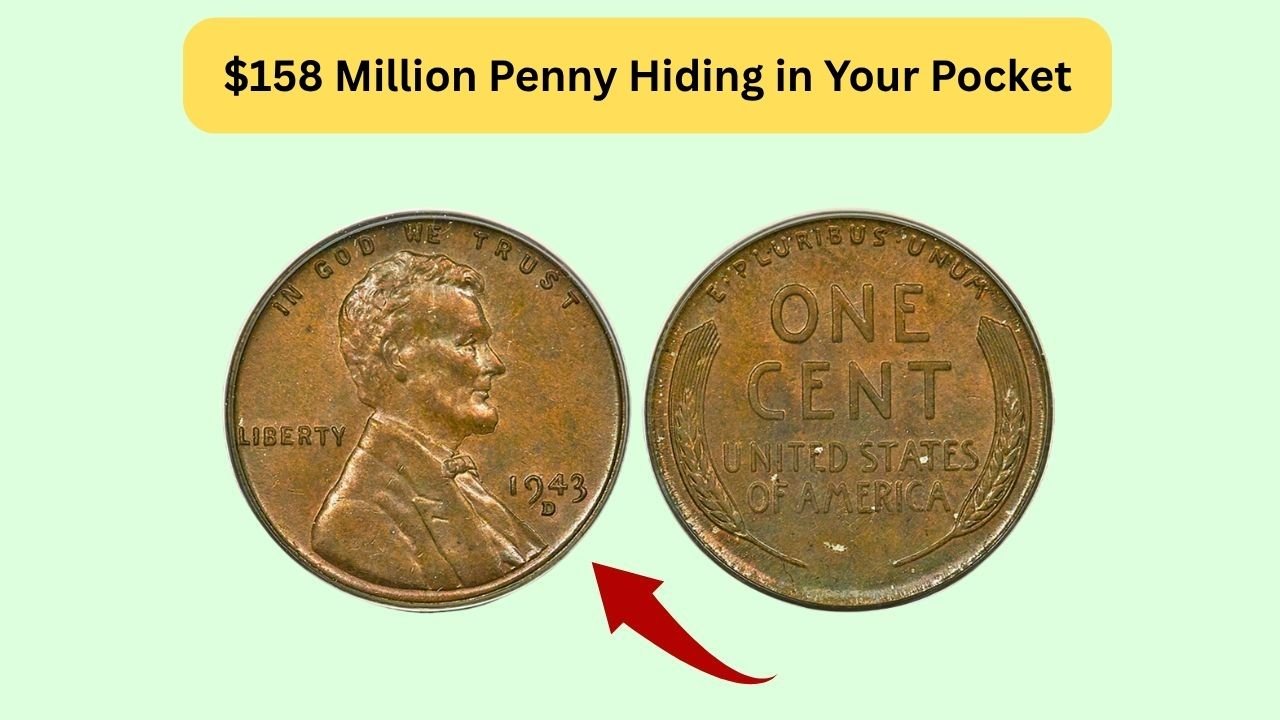Imagine finding a penny in your change worth $158 million. The Lincoln Wheat Penny, a small coin from the early 20th century, has sparked dreams of such a windfall. While most of these pennies are worth just one cent, a rare version is rumoured to be valued at an astonishing $158 million and could still be in circulation. Collectors are buzzing about this legendary coin, known for its unique errors and history. Let’s explore the story of the Lincoln Wheat Penny, what makes it so special, and how you might spot one.
A Penny with a Long History
The Lincoln Wheat Penny was first minted in 1909 to celebrate the 100th anniversary of Abraham Lincoln’s birth. Designed by Victor David Brenner, it was the first U.S. coin to feature a president’s portrait. The front shows Lincoln’s face, while the back has two wheat stalks framing the words “ONE CENT.” Produced until 1958, billions were made at mints in Philadelphia, Denver, and San Francisco. Most are common, but rare versions from specific years or with unique errors have become treasures.
Why Is One Worth $158 Million?
The $158 million valuation for a Lincoln Wheat Penny likely stems from a rare 1943 bronze penny, one of the most famous coins in the world. In 1943, pennies were made of steel due to copper shortages during World War II, but a few bronze pennies were mistakenly struck. Only about 20 are known to exist, with one selling for $1.7 million in 2010. While no verified sale has reached $158 million, speculation about a pristine 1943 bronze penny in perfect condition fuels this massive estimate. Other rare errors, like the 1955 Double Die Penny, where the date and text appear doubled, can also fetch thousands.
| Feature | Details |
|---|---|
| Years Minted | 1909–1958 |
| Face Value | $0.01 |
| Common Material | Copper (except 1943 steel pennies) |
| Rare Variant | 1943 bronze penny, 1955 double die |
| Key Value Factor | Minting errors, rarity, pristine condition |
| Top Auction Price | $1.7 million (1943 bronze penny, 2010 auction) |
The Hunt for the Rare Penny
The idea that a $158 million penny is still in circulation keeps collectors searching. The 1943 bronze penny is the holy grail, easily mistaken for a common steel penny but slightly heavier (3.11 grams vs. 2.7 grams for steel). Other valuable Wheat Pennies include the 1909-S VDB, with the designer’s initials on the back, worth up to $100,000, or the 1922 No-D Penny, missing the Denver mint mark, valued at thousands. These coins could be hiding in old jars or pocket change, making every penny worth a second look.
A Piece of America’s Past
Beyond its value, the Lincoln Wheat Penny carries a rich history. It was created during a time of growth and change in America, from the early 1900s to the post-war era. The wheat stalks on the back symbolise the nation’s agricultural roots, while Lincoln’s image honours his legacy. For collectors, these pennies are more than money—they’re tiny time capsules. Museums and coin enthusiasts display them to show how a simple cent can tell a big story about the past.
How to Spot a Valuable Penny
Want to check if you have a rare Lincoln Wheat Penny? Here are some easy tips:
- Check the year: Look for 1943 (bronze, not steel), 1909-S VDB, or 1955 double die.
- Inspect for errors: Use a magnifying glass to spot doubled text or missing mint marks.
- Weigh the coin: A 1943 bronze penny is 3.11 grams; steel is 2.7 grams.
- Look at condition: Shiny, uncirculated coins are worth more.
- Get it checked: Take unusual pennies to a trusted coin dealer or grading service.
The Lincoln Wheat Penny is proof that small things can hold huge value. While a $158 million penny may be a dream, rare versions worth thousands are real and possibly still out there. Next time you find a penny, give it a closer look—it could be a life-changing treasure hiding in plain sight.
